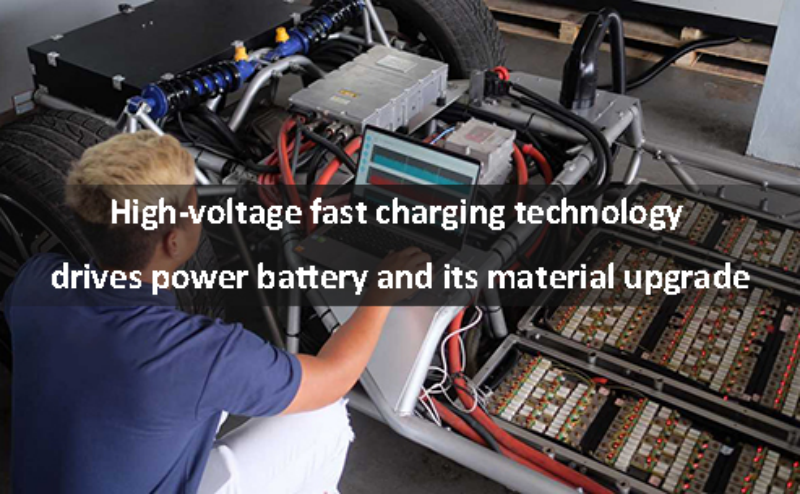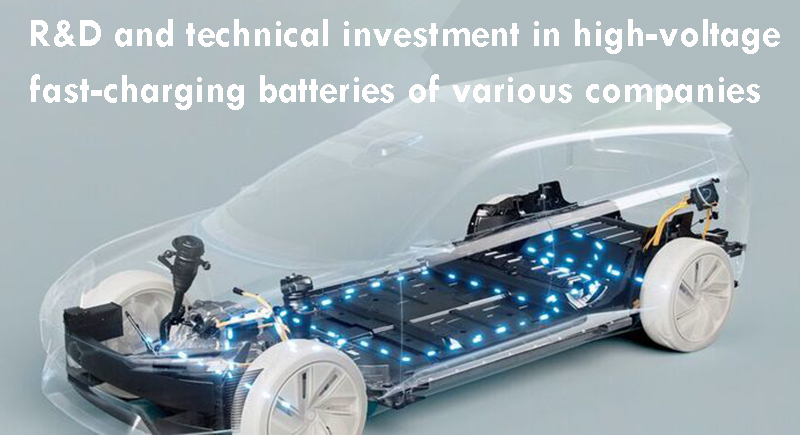
Main content:
It is reported that XPEV will start the reservation of its first model G9 under its 800V SiC (silicon carbide) high-voltage electric drive platform in August 2022, and will be officially launched in September. It is understood that the XPEVG9 adopts this platform, the comprehensive cruising range can be increased by 5%, and the battery life can be increased by 200 kilometers after charging for 5 minutes, which will significantly improve the charging efficiency of electric vehicles. Not only XPEV, but since 2021, the high-voltage fast charging technology route has been favored by more and more OEMs. International car companies such as HYUNDAI and KIA have released 800V platforms, and Chinese car companies such as BYD, which ranks among the top 10 power battery companies in the world, Great Wall, GEELY, and GAC have also launched them one after another or plan to launch their own 800V platform.
1.The upgrade of power battery and its materials will solve the charging problem
With the continuous improvement of battery energy density, although the problem of battery life has been solved, it has intensified users’concerns about charging. The realization of the 800V-level high-voltage solution will make the charging power exceed 400kW, and it is expected that the battery life can be increased by 200 kilometers to 300 kilometers after 5 minutes of charging, which will greatly alleviate the problem of difficult charging. Therefore, high-voltage fast charging is becoming an important technical route to solve the market pain point of charging, and it is also one of the important performances of electric vehicles and power batteries. It is estimated that by 2025, the number of new energy vehicles equipped with 800V architecture in China will reach 999,000, and the CAGR in the next three years will reach 270.9%; the number of new energy vehicles equipped with 800V architecture in the world will reach 2.153 million, and the CAGR in the next three years will reach 189.2%.

The market prospect is broad, and it also poses higher challenges to power battery technology. The charging speed of the power battery mainly depends on the de-intercalation and migration rate of lithium ions. If the 800V platform is used, the battery charging rate can reach up to 6C. At high charging rates, the rate of lithium ion deintercalation and migration will be accelerated, which will easily accelerate the phenomenon of lithium precipitation, resulting in loss of active materials and even potential safety hazards, affecting the service life of the battery. The upgrade of power batteries and their materials is regarded as a solution to the above problems, and related companies have increased their research and development efforts.
2.Research and development direction and status quo of high-voltage fast-charging basic materials
① Anode material field
In terms of basic materials, the research and development directions in the field of anode mainly include: using surface coating, mixing amorphous carbon and other technologies to modify graphite to achieve rapid Li+ intercalation; using silicon anode, its theoretical capacity is more than 10 times that of carbon materials, and the lithium intercalation potential is high, which reduces the risk of lithium precipitation. PUTAILAI, BTR - one of the top 10 lithium iron phosphate materials companies in China, Shanshan and other leading anode companies have technical reserves and capacity planning. Meanwhile, in order to improve the energy density of batteries, electrolytes are also developing in the direction of high voltage. Due to the poor thermal stability and easy hydrolysis of traditional lithium hexafluorophosphate, it is easy to cause rapid battery capacity decay, and its application in the field of high temperature and high voltage is relatively limited.

As a potential substitute for lithium hexafluorophosphate, the new lithium salt LiFSI (lithium bisfluorosulfonimide) has the advantages of high electrical conductivity, high thermal stability, hydrolysis resistance, high temperature resistance, and inhibition of battery inflation, which can greatly improve the high temperature resistance and high voltage performance of the electrolyte. It has great room for improvement in terms of achieving high temperature cycle stability of batteries, including extending cycle life, improving rate performance and safety. Although the application of LiFSI is technically difficult and costly, in the medium and long term, LiFSI is still a promising trend to replace lithium hexafluorophosphate. At present, DFD, CAPCHE, YONTA, TONZE, TINCI and other companies have relevant plans.
② Cathode material field
In the cathode field, the ternary cathode material will extract more lithium ions under high voltage, achieve higher specific capacity and average discharge voltage, thereby improving battery energy density, which has also increased the market demand for high-voltage ternary materials. Cathode companies such as WXTC and CHANGYUAN LICO have already set foot in this field. It should be noted that under high voltage, due to a large number of lithium ions, the ternary cathode material is prone to problems such as poor crystal structure stability and ion mixing, which in turn affects the battery cycle life and thermal stability. Therefore, high-voltage ternary cathode materials still face many technical bottlenecks to be solved.
3.R&D and technical investment in high-voltage fast-charging batteries of various companies
In terms of power batteries, on the 800V platform, due to the large number of batteries, the slight differences between the batteries may affect the service life of the batteries, so the requirements for battery consistency are extremely high. Leading battery companies such as CATL, FinDreams Battery, SVOLT, FARASiS, and CALB have already made arrangements. Facing the future 800V battery system, it is reported that all SVOLT short-knife battery categories will provide 4C fast charging technology, efficient thermal management technology, and cold bee thermal barrier technology, among which there are many cutting-edge technology applications such as anode modification technology. Its L300 battery features 2.2C ~ 4C fast charging performance and is suitable for 800V high-end models.

The 800V supercharged high voltage platform technology independently developed by FARASiS can reach 2.7C, and the whole package charging is equivalent to 2.2C, which means that SOC 10%-80% charging only takes 15 minutes. It is predicted that it will enter mass production in October 2022. Recently, CATL's chief scientist said that CATL's CTP3.0 Qilin battery has four major advantages, one of which is to meet the needs of high voltage fast charging, and 4C charging is not difficult. The Qilin battery, previously released in June, can quickly charge from 10% to 80% in 10 minutes.
From the loading situation, CALB will use high-voltage ternary battery material technology to mass-produce 590 module batteries in 2020, and realize the loading on the Aion-LX model designed by its main customer GAC Aion. In addition, its high-voltage fast-charging ternary lithium battery will also be installed in Smart Elf #1, which can support 150kW fast charging. Driven by the trend of the 800V platform, it is expected that more and more battery and material companies will participate in and accelerate the research and development and technical investment of high-voltage fast-charging batteries and supporting materials. They will ensure the fast charging experience and safety performance of the power battery under the goal of continuously improving the cruising range.
Related article: Top 10 power battery companies, Tesla 4680 battery vs CATL CTP battery
















